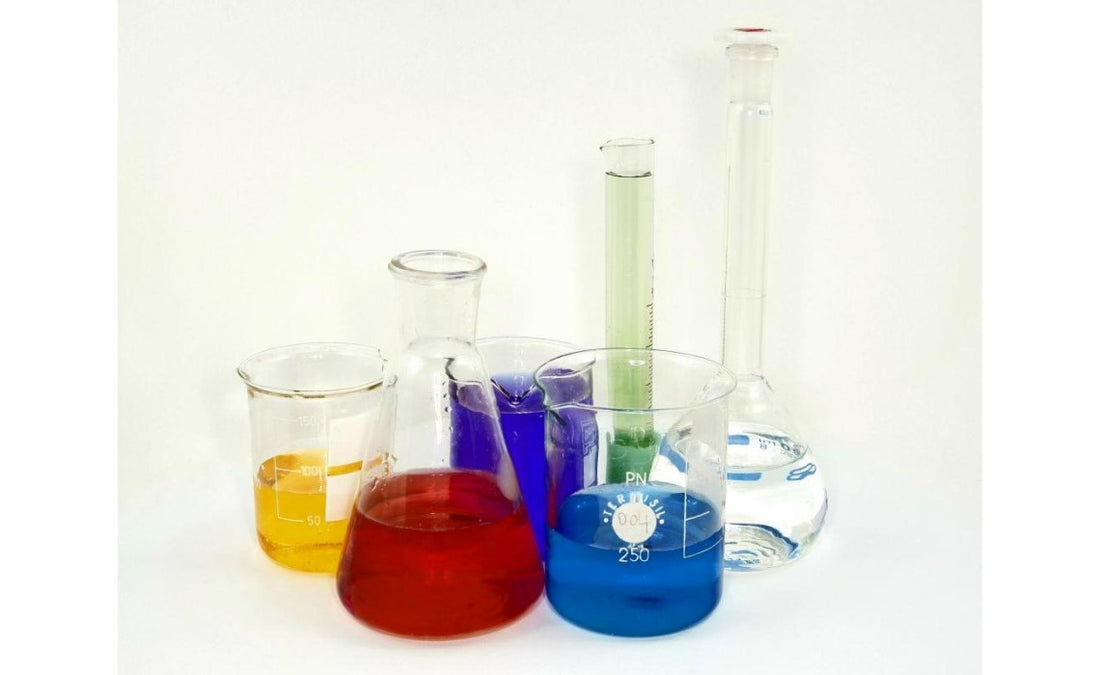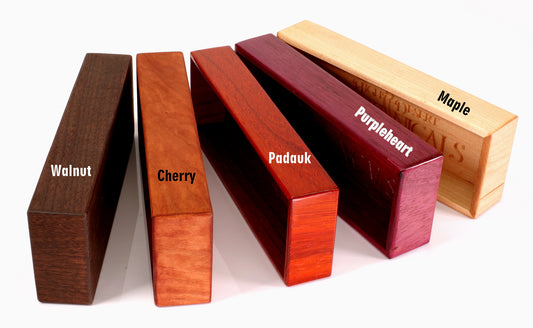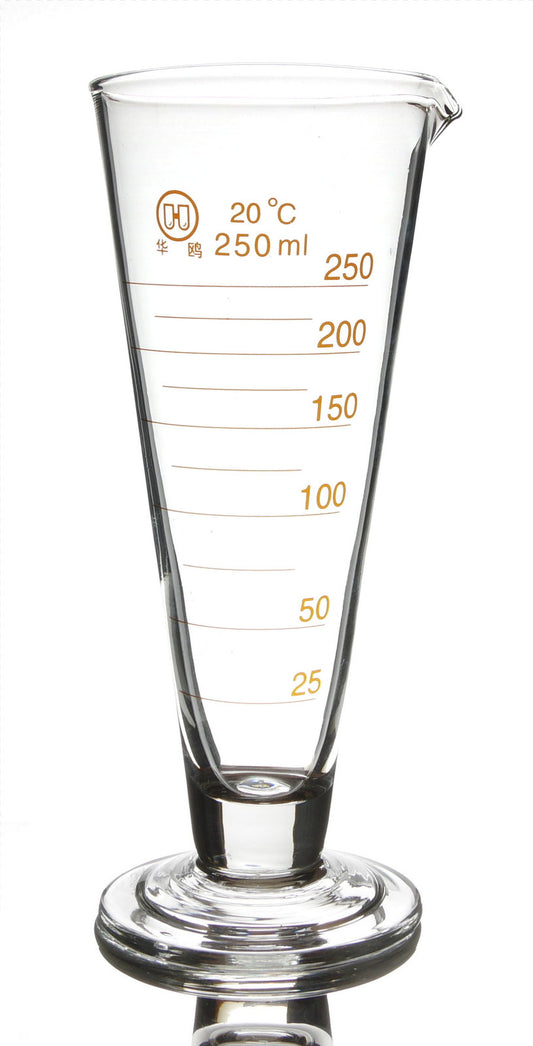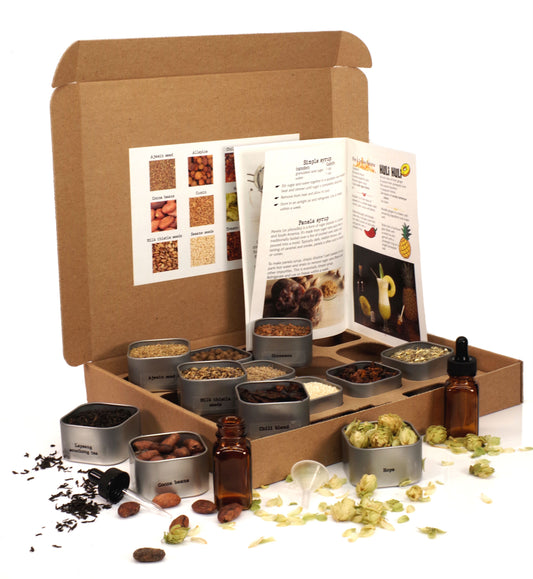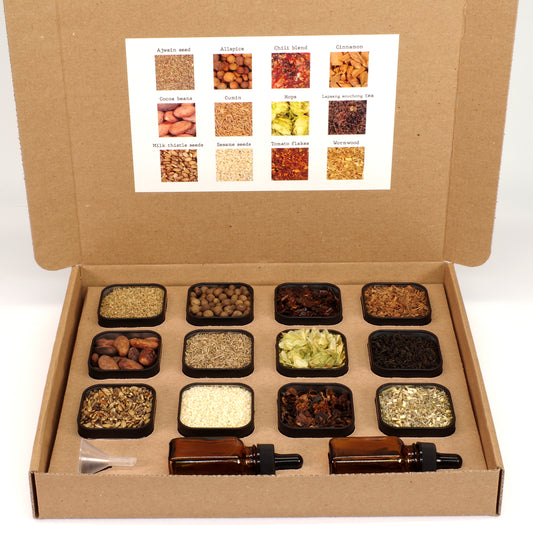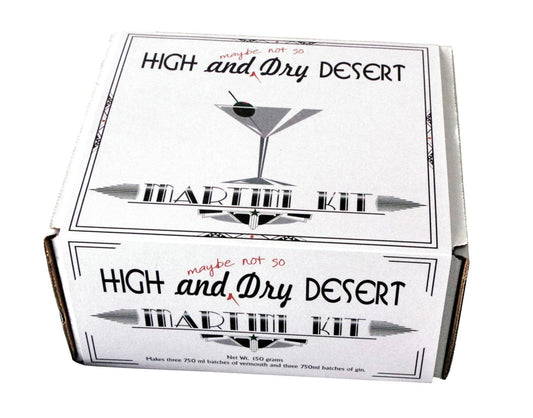How much pure alcohol is really in that drink?
Have you ever blended a batch of bitters using a bitters kit and wondered about its final Alcohol By Volume (ABV)? Or wanted to dilute to a specific ABV but weren’t sure how much water to add? Is freshman algebra a hazy memory of “solve for x?” Here are the formulas you’ll need to calculate the alcohol content in your cocktails.
Dilution CalculatorProof vs ABV
In this article, I refer to the US standard proof which is defined as double the % ABV, so 80 proof = 40%. In other countries proof may equal a different percent ABV; this article from Encyclopedia Britannica explains the history of the proof system: https://www.britannica.com/story/why-is-alcohol-measured-by-proof
Multiplying the volume of a liquid by the decimal ABV tells you how much pure ethanol is in the mixture.
A 750 ml bottle of 80 proof (40% ABV) whiskey has [750 ml × 0.40] 300 ml of pure ethanol.

Calculating ABV of a blend
All the ABV percentages in this article are used in their decimal format so 20% = 0.20, 60% = 0.60, etc. Since you are dividing volume by volume, the units cancel out; you can use either ounces or milliliters if it’s consistent everywhere in the formula. Don’t mix units. There’s no limit to how many liquids you can include, so if you need to know the ABV of a cocktail, just add up all of the ingredients with this formula.
The formula for the final ABV of a mixture is:

Example #1 – Blending 150 ml of 100- proof (50% ABV) tincture with 100 ml of a water-based syrup (0 % ABV), a common method of making bitters:

Example #2 – Blending 50 ml of 80-proof herbal tincture with 200 ml of dry white wine (11% ABV) and 25 ml of demerara syrup (0 % ABV) to make vermouth:

Use our calculator to find the % ABV of your bitters, blended mixer, or cocktail.
% ABV Calculator
| Item | Volume (ml) | % ABV |
|---|---|---|
| Mixer 1 | ||
| Mixer 2 | ||
| Mixer 3 | ||
| Mixer 4 | ||
| Total | 0 | 0 |
Calculating amount needed for diluting to a target ABV
We can take the above formula and turn it around to figure out how much of one liquid is needed to dilute another to a target ABV. In this instance, we know the volume and proof of liquid A and the final ABV but want to figure out how much of volume B is needed.
The original formula:

gets turned on its head to become:

Since the concentration of ethanol (proof or ABV) is canceled out in this calculation, you can use either unit as long as it’s consistent. Don’t mix ABV and proof in the same formula.
Example #3 – If you want to dilute 200 ml of 100-proof (50%) gin down to a final 80-proof (40%) to make #dry martinis, how much water (0% ABV) is needed?

What if you want to increase the ABV of a liquid by adding a higher-proof alcohol? The same formula works here too.
Example #4 – If you have 200 ml of 80-proof (40 %) brandy and want to boost it to 100-proof (50%), how much 190-proof (95%) grain alcohol should be added?

Or use our calculator to find the right amount!
Dilution Calculator
| Item | Volume (ml) | % ABV |
|---|---|---|
| Mixer 1 | ||
| Mixer 2 | 0 | |
| Total | 0 |
Now that you know how to calculate % ABV and dilution, you're going to need a good tool for measuring your ingredients. Try our Pharmacy Style Measuring Glass. Its conical shape makes it accurate from 25 ml up to 250 ml and it's a handsome addition to any bar.
Resources
Encyclopedia Britannica, Why is Alcohol Measured by Proof?
https://www.britannica.com/story/why-is-alcohol-measured-by-proof
Food Network
https://www.foodnetwork.com/fn-dish/news/2017/07/why-alcohol-content-is-
Main image: Wikipedia

